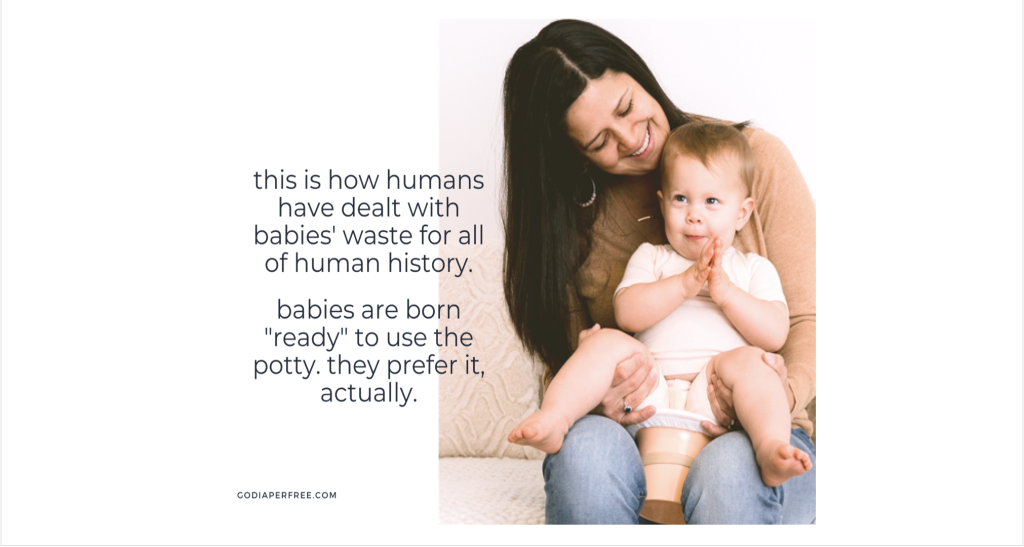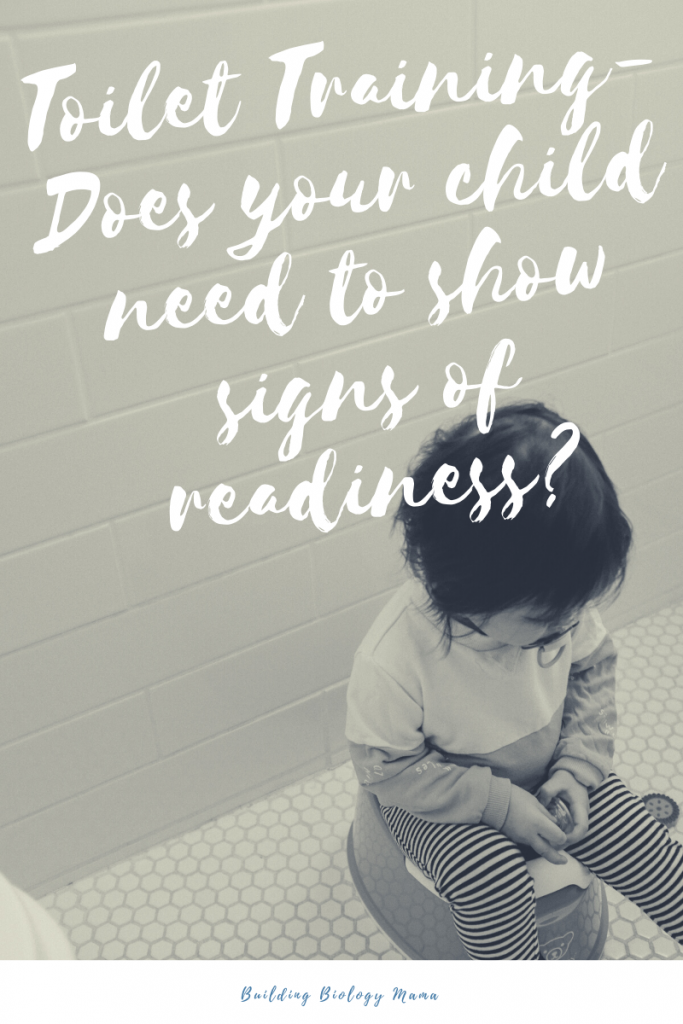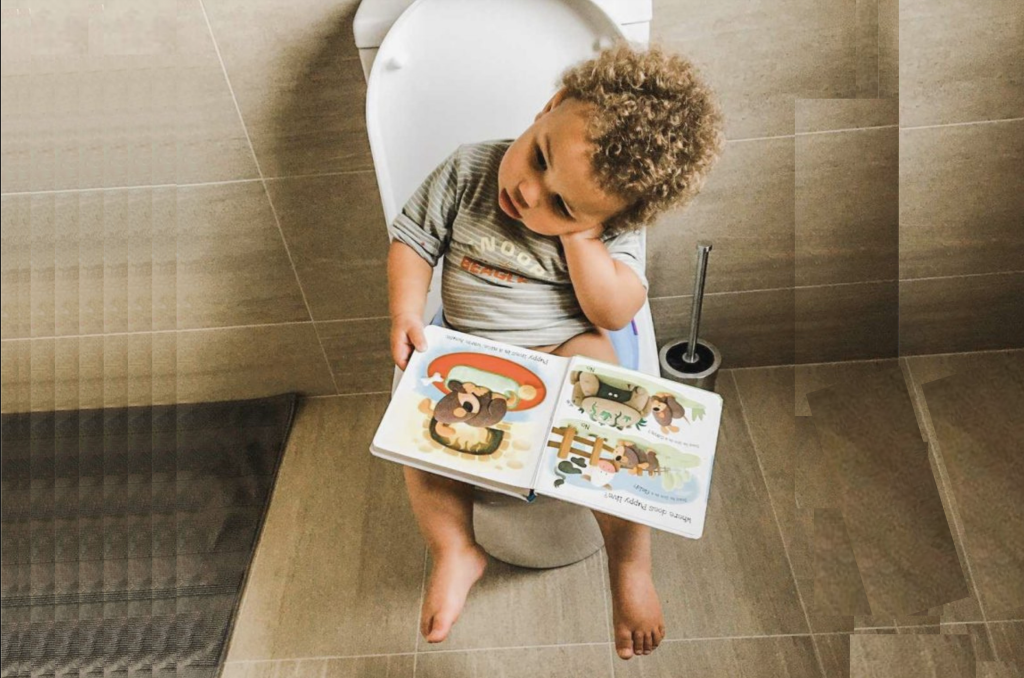Welcome to part two of our 3-part study on Elimination Communication, also known as Infant Potty Training and Natural Infant Hygiene. In this post, we will be exploring and addressing the misconceptions that surround Elimination Communication. If you haven’t checked out my last post about Elimination Communication, click here to catch up!
There are a lot of myths out there about how Elimination Communication works and how it affects bub. Additionally, as an alternative to the well-marketed and commonly used disposable nappy, the idea of infant potty training is commonly met with scepticism. Let’s explore some of the those common myths:
MYTH- “Babies do not have the muscles to regulate their elimination needs”
A fascinating article on Parenting Science followed a study that claimed that only 20% of children attain complete bladder and bowel control by age 2. Of course, complete control isn’t necessary to facilitate EC, merely enough of an ability to briefly delay ‘voiding’. The study was able to conclude that infant urination is not merely an automatic reflex. And interestingly, a follow up study took place where researchers attempted to get infants to urinate by manually pressing their bladders, with no success. With this in mind, they were able to conclude that infants have enough awareness and muscle control to ‘hold it’ when they have to ‘go’.

MYTH- “Babies do not have the awareness of their elimination needs, or the ability to communicate these needs”
I believe that babies are born aware of their elimination needs and actually lose this awareness when wearing nappies. Conventional potty training retrains their focus onto this pre-existing awareness. This was a particular interest to me when I started reading up on Elimination Communication because it supports a baby’s awareness to ‘go’ from birth. The Parenting Science study touches on this by stating that babies “squirm, shudder, make faces and change breathing patterns” when they need to eliminate, which can be monitored by Mum and Dad to help cue when to communicate their chosen associated words and baby can also be taken to the potty.

MYTH- “Children are not ready to toilet train before the age of 2 and they must show signs of readiness”
Despite different cultures and families having different expectations of when a child should be toilet trained, more than 50% of children around the world are toilet trained at about 1 year of age
Historically it is interesting. By the 1950s most children in the USA were toilet trained and out of nappies by 18 months (Lekovic, 2006). However, in 1962 a Harvard medical professor and paediatrician was hired by Pampers to recommend ‘toilet training readiness’ and by the 1970s all the campaigning was successful, and it was mostly universally believed that toilet training needed to wait until a child was at least two years old. It is interesting that this is still the predominant belief in our society despite the evidence showing the contrary.
Elimination Communication is not about full toilet independence of an infant. Of course, babies are unable to walk, wipe and dress themselves, and therefore aren’t capable of walking to the potty when they need to ‘go’. That is why, The Baby Sleep Site recommends having bub wear a nappy to bed, if only practising daytime EC, as the infant does not have the ability to initiate elimination on their own without their parents’ help. According to Raising Children, full toilet independence will come later after baby learns to walk, follow verbal instructions, dress themselves, wipe and so on. This is logical but toilet training and full toilet independence are different.
This is why I love Elimination Communication. EC can be utilised casually, part-time or full-time to support toilet training on a level that is comfortable for you and your family, whether it be to assist your child with staying in tune with their need to eliminate, cut down on the use of disposable nappies or toilet train your child as soon as they are able.
We practised EC part-time with our Master Little and he was toilet trained with poop by 7 months and at 18 months we were confident to take off the daytime nappy too.
For me, Elimination Communication is about respect, dignity, trust and assists with hygiene, and minimising the environmental impact. Pottying an infant was actually easier than I thought too. Tune in next week for a more comprehensive view into my Elimination Communication experience, and for the mean time feel free to reach out and tell me your EC stories!
Alternatively, if you want to find out more on how to get started, a trusted resource with heaps of practical help is from Go Diaper Free has a mountain of resources to help support you.
Sources
DeJeu, E., 2020. Elimination Communication and Your Baby’s Sleep (online) available: https://www.babysleepsite.com/sleep-training/elimination-communication-baby-sleep/#:~:text=For%20instance%2C%20if%20you’re,wake%20more%20often%20at%20night (date accessed Sept 2020)
Dewar, G., 2020. Infant toilet training: An evidence-based guide (online) available: https://www.parentingscience.com/infant-toilet-training.html (date accessed Sept 2020)
Lekovic, J., 2006. Diaper-free before 3: The healthier way to toilet train and help your child out of diapers sooner. Harmony.
Raising Children, 2020. Toilet Training: a practical guide (online) available: https://raisingchildren.net.au/preschoolers/health-daily-care/toileting/toilet-training-guide (date accessed Sept 2020)
